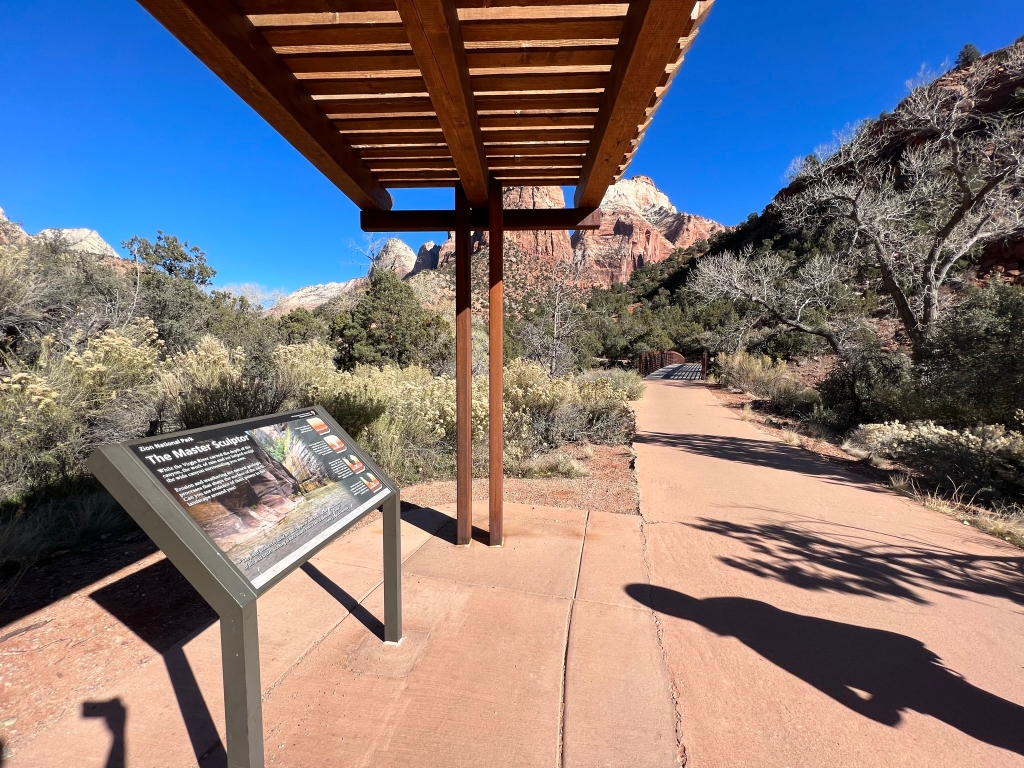
The Master Sculptor
Learn
The power of wind, water, and gravity have shaped Zion Canyon over time. Erosion and weathering also play a role forming natural arches in the park. A natural arch is formed when deep cracks penetrate into a layer of sandstone. Erosion wears away the exposed rock layers and surface cracks expand, isolating narrow sandstone walls, called "fins". Water, frost, and the release of tensions in the rock cause crumbling and flaking of the porous sandstone, eventually cutting through some of these fins. The resulting holes become enlarged to arch proportions by rockfalls and weathering.
Architecturally, arches are the most stable load bearing structure, but through weathering, eventually all arches collapse, leaving only buttresses that will inevitably give way to the unyielding forces of erosion.
Look
Among the arches in Zion, one of the most visible is the Crawford Arch. It can be seen from the Pa’rus Trail on Bridge Mountain, a thousand feet above the canyon floor. Bridge Mountain is located on the east side of the canyon and is one of the tallest peaks along the trail. Once you locate the peak, follow the left edge down to where it intersects with the other peak. From the intersection follow the small line of trees to the right. Can you spot the Crawford Arch?
Connect
Have you wondered why Utah and the Colorado Plateau have so many natural arches? Sandstone throughout the region meets the favorable conditions for large natural arches to form. The rock is strong enough to support the weight of the arch but soft enough to be easily eroded by wind, water, and gravity.
Is there something we missed for this itinerary?
Itineraries across USA


















































